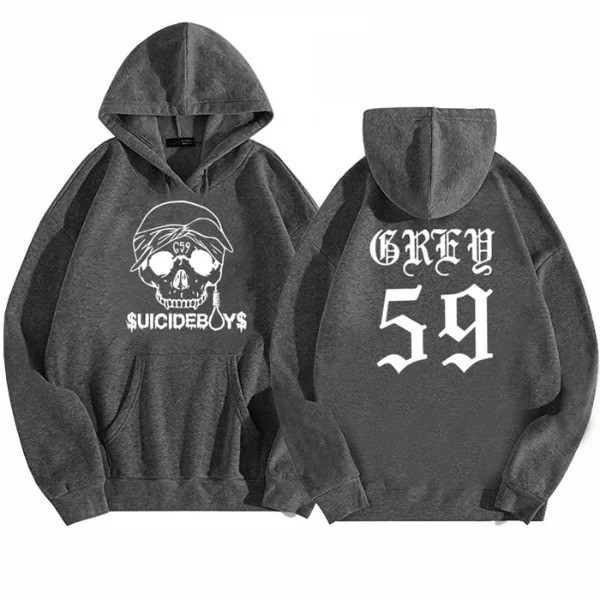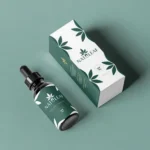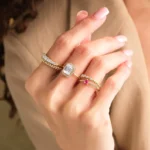$uicideboy$ isn’t just a music act—it’s a lifeline for countless fans battling internal wars. Their lyrics cut deep, tackling depression, anxiety, trauma, and addiction with unapologetic honesty. What makes their suicideboys merch different is that it carries this pain into visual form. Every hoodie, tee, and graphic feels like an extension of the music’s emotional core. This isn’t just clothing—it’s therapy stitched into fabric.
More Than Merch—It’s Survival Gear
For many, $uicideboy$ merch becomes something to hold on to when the world feels too heavy. It’s worn during breakdowns, sleepless nights, and long walks through silent cities. Fans often describe these clothes as “armor”—something that protects and speaks when they can’t. Unlike fashion trends that change with seasons, this merch stays because it represents survival. It tells the story of those still standing.
Lyrics You Can Wear
$uicideboy$ merch often features lyrics that haunt in the best way. Phrases like “Kill Yourself Part III,” “I dream of chrome in my future,” or “Now I’m up in flames” are more than edgy lines—they’re pieces of someone’s truth. Wearing them makes you feel heard without ever saying a word. These printed thoughts reflect pain so real, fans wear them like scars. For the broken, it’s a badge of belonging.
Raw Designs for Raw Emotions
Everything about the design of $uicideboy$ merch feels intentional and emotionally charged. The chaotic fonts, distorted symbols, and cryptic artwork reflect the mental noise many fans face daily. The merch doesn’t try to look clean—it mirrors reality. For fans who battle demons, the visual style hits home. It’s not about pleasing others—it’s about telling your truth, no matter how messy or misunderstood.
The Power of Dark Aesthetics
Black is the dominant color in $uicideboy$ merch for a reason—it symbolizes grief, depth, and internal conflict. Muted tones, red accents, and shadowy prints build an aesthetic that feels heavy, just like the lyrics. This darkness isn’t for shock—it’s for healing. It gives fans a safe space to exist in their truth, away from the pressure to be okay. The clothing feels like comfort in chaos.
Clothing That Understands You
Most fashion is designed to stand out or sell an image. $uicideboy$ merch does the opposite—it reflects what’s already inside you. The graphics and quotes feel deeply personal, like they were created from your own journal pages. When nothing else makes sense, this merch does. It understands isolation, numbness, and that strange emptiness that words can’t explain. It’s more than style—it’s empathy you can wear.
A Voice for the Voiceless
When mental health is still taboo in so many places, $uicideboy$ merch gives fans a way to speak through symbolism. You don’t have to tell your story—your shirt does it for you. The designs say: “I’ve been through darkness. I’ve felt pain. I’m still here.” It creates silent conversations in crowds, between strangers who understand. You’re no longer invisible—you’re seen, without saying a word.
Oversized Fits, Overwhelming Feelings
There’s a reason $uicideboy$ merch is mostly oversized—it matches the emotional weight carried by the people who wear it. The hoodies feel like a blanket when you need to hide from the world. The tees are loose enough to breathe through anxiety. These cuts aren’t just fashion—they’re comfort. They give wearers space to exist without judgment, fitting bodies and moods that don’t fit the mainstream.
Real Pain Doesn’t Sell Out
Unlike brands that commercialize sadness, $uicideboy$ merch feels real because it is real. The duo speaks from personal experience—about addiction, suicidal thoughts, broken families, and existential dread. That rawness transfers into the merch. It’s not watered down to appeal to the masses. It’s designed for people who live at the edge and find strength in vulnerability. Real pain can’t be manufactured—and that’s what makes this merch honest.
Limited Drops, Lifelong Impact
The limited nature of $uicideboy$ merch only adds to its emotional weight. When you get your hands on a piece, it feels like you’ve captured a moment in time. Fans remember where they were emotionally when they bought it—what song saved them, what lyric hit hardest. The hoodie isn’t just warm—it’s a timestamp of healing or hurting. Every piece becomes part of your emotional history.
The Fashion of Feeling Too Much
While the fashion world often thrives on trends and aesthetics, $uicideboy$ merch thrives on emotion. It’s for those who feel too deeply, think too much, and speak too little. It’s not about being stylish—it’s about being real. The tears, the rage, the silence—they’re all stitched into the sleeves. You don’t wear this merch to impress. You wear it to survive another day.
Fans Who Find Themselves in Fabric
Many $uicideboy$ fans say they found themselves in the music—and then found comfort in the merch. It’s one thing to listen to pain, but another to wear it and own it. The clothes become a way to reclaim identity. In a world that tells you to hide your emotions, this merch says: “Show them.” It gives you permission to be honest, even when it’s ugly or hard.
Building a Wardrobe with Meaning
Some fans build entire wardrobes around $uicideboy$ merch—not for fashion clout, but for emotional continuity. Each piece is chosen with care, reflecting different stages of their journey. One shirt reminds them of a loss. Another helps them through a relapse. A hoodie becomes their go-to on anxious days. It’s not about having the most pieces—it’s about having the right ones. Ones that feel like home.
A Movement Beyond Music
$uicideboy$ merch represents a cultural movement of emotional honesty, mental health awareness, and rebellion against superficiality. It has given thousands of fans a space to exist as they are—damaged, healing, grieving, and growing. It proves that fashion can be more than surface-level. It can be soul-deep. In every ripped seam and faded lyric, there’s a message: You’re not alone. Your pain matters. And so do you.
Conclusion: When Clothing Becomes Connection
$uicideboy$ merch reflects real pain—not as a marketing tool, but as a mirror for those who live with it. It doesn’t sugarcoat suffering or glamorize the struggle. Instead, it meets fans where they are: in the shadows, in the silence, and in the slow climb toward healing. These aren’t just shirts and hoodies. They’re stories. They’re support. And for many, they’re what helps make life bearable—one lyric, one thread, one day at a time.



